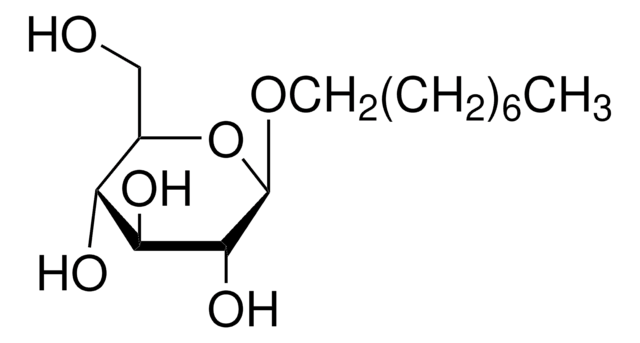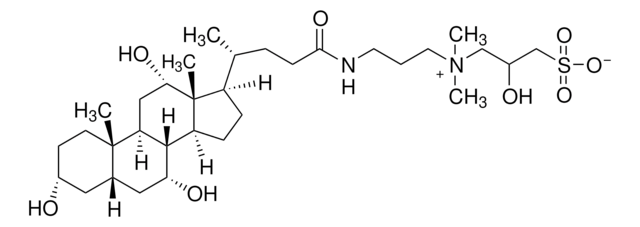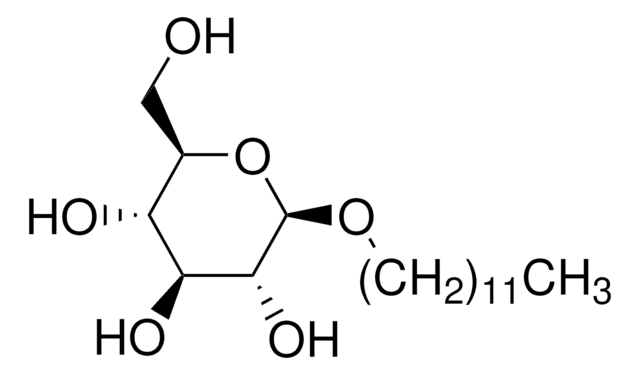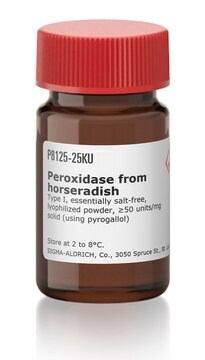O3757
Octyl β-D-glucopyranoside solution
≥95% (HPLC), 50 % (w/v) in H2O
Sinónimos:
n-Octyl glucoside, OGP
About This Item
Productos recomendados
descripción
non-ionic
Análisis
≥95% (HPLC)
mol peso
average mol wt 24500-25000
concentración
50 % (w/v) in H2O
número de agregación
84
CMC
20-25
temperatura de transición
cloud point ≥100
aplicaciones
detection
temp. de almacenamiento
−20°C
cadena SMILES
CCCCCCCCO[C@@H]1O[C@H](CO)[C@@H](O)[C@H](O)[C@H]1O
InChI
1S/C14H28O6/c1-2-3-4-5-6-7-8-19-14-13(18)12(17)11(16)10(9-15)20-14/h10-18H,2-9H2,1H3/t10-,11-,12+,13-,14-/m1/s1
Clave InChI
HEGSGKPQLMEBJL-RKQHYHRCSA-N
Aplicación
Información legal
Código de clase de almacenamiento
10 - Combustible liquids
Clase de riesgo para el agua (WGK)
WGK 3
Punto de inflamabilidad (°F)
Not applicable
Punto de inflamabilidad (°C)
Not applicable
Certificados de análisis (COA)
Busque Certificados de análisis (COA) introduciendo el número de lote del producto. Los números de lote se encuentran en la etiqueta del producto después de las palabras «Lot» o «Batch»
¿Ya tiene este producto?
Encuentre la documentación para los productos que ha comprado recientemente en la Biblioteca de documentos.
Los clientes también vieron
Nuestro equipo de científicos tiene experiencia en todas las áreas de investigación: Ciencias de la vida, Ciencia de los materiales, Síntesis química, Cromatografía, Analítica y muchas otras.
Póngase en contacto con el Servicio técnico











